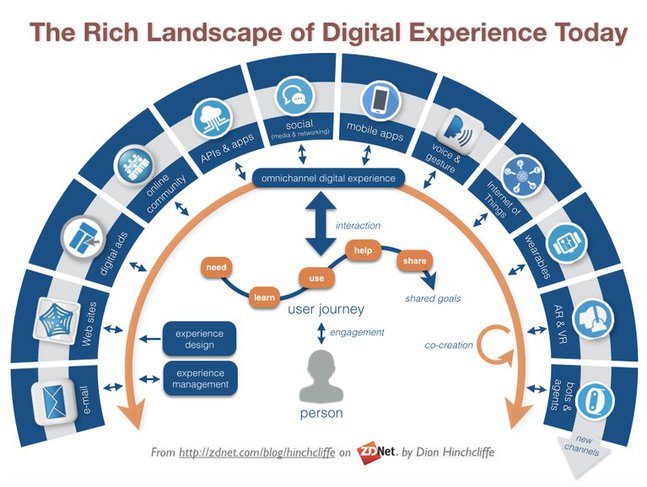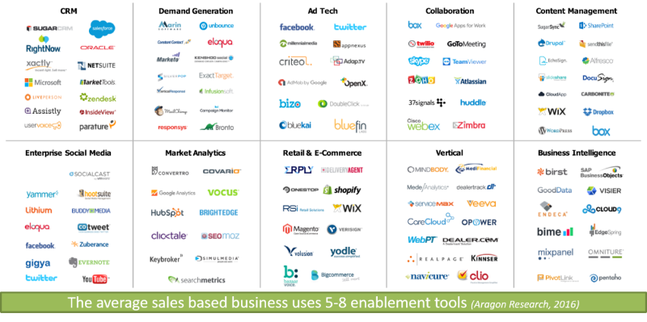Will your role survive in a digitally enabled sales force?
If you are currently in a B2B sales role and you are not taking an intense and active interest in all of these new tools across all of these categories of sales and marketing, then you can expect to be blindsided in the very near future.
Having attended the Sales 2.0 conference in San Francisco in July 2016, I’m now convinced that the sales profession will never be the same again. Not only is everything that I have learned throughout almost 3 decades almost totally redundant, but it is now also clear that the role of the sales person is evolving much faster than I had ever imagined.
Sadly, what is also clear is that vast numbers of B2B sales people will gradually lose their jobs as the traditional role of the sales person diminishes with the new buying journey. Oxford University researchers have estimated "that 47 percent of U.S. jobs could be automated within the next two decades" and this will most certainly include expensive, and increasingly unqualified sales people that either can't, or wont transform.
Everyone knows that technologies are increasingly enabling customers to ‘self-serve’, and this is the critical point – customers PREFER to buy, rather than be ‘sold’ to. 'Self-service’ allows customers to not only lower their cost of acquisition (significantly) by conducting their own product research and purchases online, but they can also remove the need to speak with one of those outdated and biased sales people that fail to bring any valuable insights.
One of the key themes of this year’s Sales 2.0 conference was the rise and rise of new technology tools that can assist marketers and sales people to address some of this radical change that we are now witnessing in buyer behavior. If you want to improve your sales conversion ratio's (and let’s face it, you have to) then you’ll need to start looking at how some of these new tools can assist you in producing the right information and disseminating it through the right channels, to the right people, at the right time in the buying journey. Vendors MUST understand every detail of the buying journey and create ‘buying stage appropriate’ messaging in order to cut through and differentiate.

Artificial Intelligence, Robotics, Machine Learning, Predictive Analytics are no longer science fiction concepts …..they are already beginning to have a serious impact on how today's savvy business leaders manage their sales and marketing activities. What is also clear is that these new tools are being trailed and embraced at a much greater speed than I had imagined.
- Sales Engagement Platforms (SEP) - such as ClearSlide, bring a whole new range of integrated services that are designed to empower sales & marketing professionals in the digital marketing era through more effective engagements with customers. Aragon Research recently reported (June 2016) that the market for SEP is “expected to grow from $780M today to $5B by 2021”.
- Personal Data Fusion – addresses the cost of information overload and combines AI and data analytics to cut through all of the noise, fusing data from different sources to put the right information in the sales person’s hands at exactly the right time, helping to reduce sales cycle time and increase win rates. Stunning technology and highly valuable to say the least. Watch this space.
- Artificial Intelligence (AI) – is now everywhere, and companies like Conversicahave developed an automated sales assistant powered by artificial intelligence. The assistant works just like a human sales assistant, reaching out to every single one of your leads and engaging each of them in a human conversation. Conversica says that “people love it because the assistant is personable, friendly and responsive, connecting them quickly with a human that can help”.
- Cognitive Computing - technology platforms that are based on Artificial Intelligence and Signal Processing. These platforms encompass machine learning, reasoning, natural language processing, speech and vision, human-computer interaction, dialog and narrative generation etc. In February 2011, the world was introduced to Watson, IBM’s cognitive computing system that defeated Ken Jennings and Brad Rutter at Jeopardy. According to IBM, "the goal is to have computers start to interact in natural human terms across a range of applications and processes, understanding the questions that humans ask and providing answers that humans can understand and justify”.

So what does all of this mean for me? Put simply, if you are currently in a B2B sales role and you are not taking an intense and active interest in all of these new tools across all of these categories of sales and marketing, then you can expect to be blindsided in the very near future. Your career longevity now depends upon you becoming technically competent in all of these platforms and you must start learning about how these technologies can enhance your customers buying experience. Can you imagine the builder that decided to ignore those newfangled "nail guns" and instead decided to stick with his hammer?
Now for the good news: just like every other wave of disruptive innovation (or creative destruction), there will also be some winners. As it pertains to the sales profession, technology will never replace those highly specialist enterprise sales professionals that customers value for their insights. However, this survival will depend on how quickly these sales professionals embrace and adopt the right technology tools (including social) to help them with their specific role. One thing is certain for all sales people: what got you where you are today, will not get you where you need to be tomorrow. Adapt – Learn – Change.
I leave you now with the wise words of retired US General Eric Shinseki:

